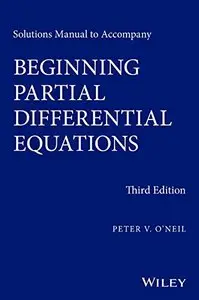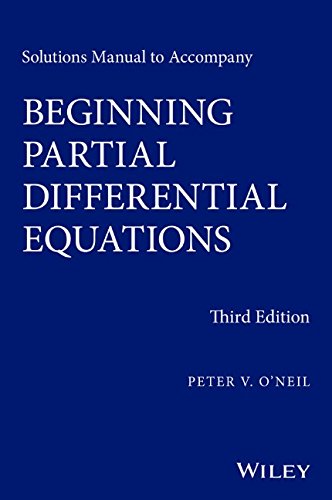Solutions Manual to Accompany Beginning Partial Differential Equations by Peter V. O'Neil
English | 2014 | ISBN: 1118630092 | 128 pages | PDF | 1 MB
English | 2014 | ISBN: 1118630092 | 128 pages | PDF | 1 MB
As the Solutions Manual, this book is meant to accompany the main title, Beginning of Partial Differential Equations, Third Edition. The Third Edition features a challenging, yet accessible, introduction to partial differential equations, and provides a solid introduction to partial differential equations, particularly methods of solution based on characteristics, separation of variables, as well as Fourier series, integrals, and transforms.
Thoroughly updated with novel applications such as Poe’s pendulum and Kepler’s problem in astronomy, the book begins with first-order linear and quasi-linear PDEs and the role of characteristics in the existence and uniqueness of solutions. Canonical forms are discussed for the linear second-order equation, along with the Cauchy problem, existence and uniqueness of solutions, and characteristics as carriers of discontinuities in solutions. Fourier series, integrals, and transforms are followed by their rigorous application to wave and diffusion equations as well as to Dirichlet and Neumann problems. In addition, solutions are viewed through physical interpretations of PDEs. The book concludes with a transition to more advanced topics, including the proof of an existence theorem for the Dirichlet problem and an introduction to distributions. New topical coverage includes novel applications, such as Poe’s pendulum and Kepler’s problem in astronomy. Solutions using the Laplace transform have been added. The book continues to be appropriate for those who need to emphasize a rigorous mathematical treatment and those who need quick access to methods and applications. The first group is addressed by including details of proofs in Chapter Eight, sections of which can be included at any point in course lectures. The second group is addressed with a detailed chapter organization that allows for a rapid transition from method to solution to application in the beginning chapters.



